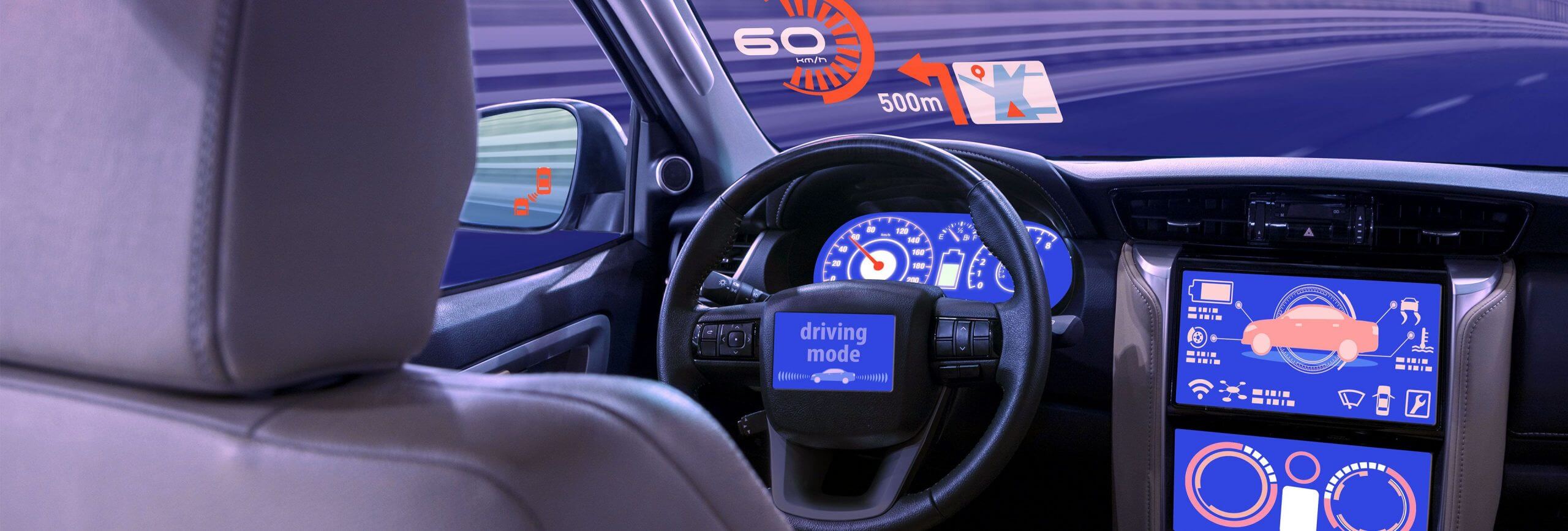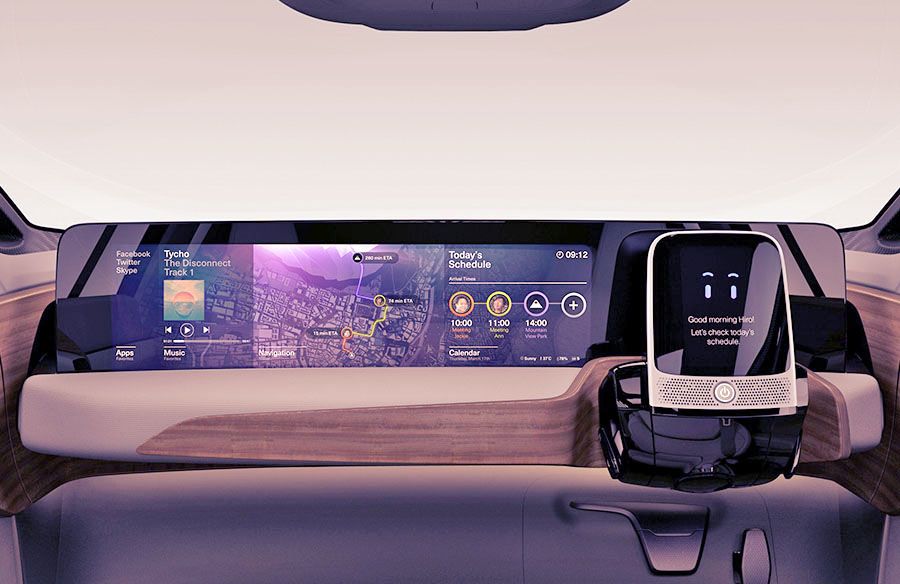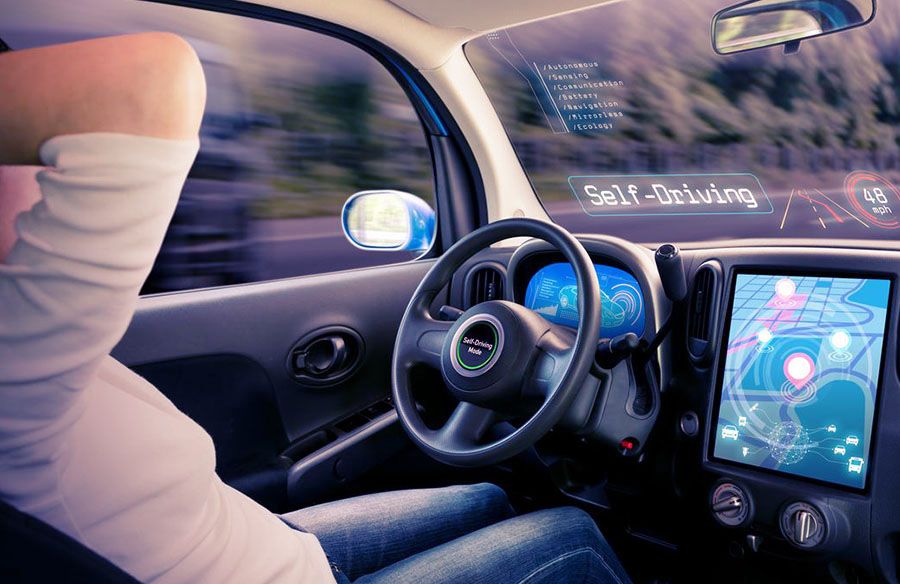
What is a vehicle infotainment system?
A vehicle infotainment system is a combination of hardware and software that delivers information and entertainment to a car’s driver and passengers. It does so via audio/video (A/V) interfaces and control elements, like touch screen displays, button panels and voice commands, etc. Advanced infotainment systems enable Bluetooth and Wi-Fi connectivity, live media streaming and smart technology for mobile integration. Components and functionality vary, depending on specification.
According to Consumer Reports, approximately 82% of vehicles sold in 2019 had a dashboard touch screen, compared with 53% in 2014. The global in-car infotainment market was spurred on by the development of the smartphone and the rise of cloud technology. And now, according to a 2018 study by Allied Market Research, it’s an industry valued at over $11.14 billion.
There’s been a paradigm shift in car manufacture; from mechanical ingenuity to software quality, execution and integration. Demand for systems that offer in-car comfort, entertainment and convenience—such as on-demand music, smart navigation and hands-free call options—has risen sharply in the past few years. And it’s no coincidence that this shift coincides with the meteoric rise of the smartphone and all the services we’ve become accustomed to accessing at the tap of a screen.
Realising the profit-boosting potential of in-car technologies, many of the automotive industry’s big players are now integrating infotainment systems into their vehicles. This, in turn, is evolving the market for all automakers.
Three ‘must-dos’ for vehicle infotainment system integration
Cars have become an increasingly software-driven experience. Indeed, within the average car there are over a million lines of code. But the advent of vehicle infotainment systems happened at a time when many cars were still using outdated software technology. So, while the demand for this emerging tech is certainly there, there are three crucial elements for automakers to consider:
1. Keep your software updated
Vehicle infotainment systems are typically developed as part of a long-term project, lasting several years. The nature of such projects means they’re generally carried out by dozens of engineers, over a period of time in which it’s plausible—if not probable—that the technological landscape will change. Hence, manufacturers can lose the ability to design for now. Furthermore, technologies are often based on a classical understanding of traditional embedded engineering (within electronics manufacturing), which actually contradicts the meaning of a digital “trend”. Flexibility to change is the only way to stay relevant in the marketplace.

This was proven by the mobile phone industry, which has seen fierce competition between Android, iOS, Symbian (discontinued, despite utilising the most powerful C/C++ software) and Windows Phone (also discontinued) over the years. The most flexible competitors were able to outrun those who were reluctant to move away from their preferred platforms—because they reacted to market change.
To stay ahead of the curve, manufacturers now tend to use one of the following strategies:
- Application development that centres on specific infotainment systems
Automakers want to differentiate themselves from the competition. So, many manufacturers are choosing to develop in-house software for their own unique vehicle infotainment systems—with the goal of increasing in-house development by at least 50%, by 2025.
Some German manufacturers have already created dedicated vehicle software engineering units within their businesses. These teams are responsible for developing car software, digital ecosystems and customer-oriented sales functionality—across all group brands. - Enhance available applications by integrating existing platforms
Generally speaking, manufacturers favour this option—choosing to make use of existing Google or Apple ecosystems instead of developing software from scratch. This means that their vehicle infotainment systems are compatible with most smartphones, and have the functionality to help a driver navigate, make calls, play music and perform other tasks, hands-free.
Some major German and Scandinavian car manufacturers have followed this path, announcing a move towards Google’s Android Automotive as a common platform. But this is considered, by some, a controversial move, since it requires the continual development and maintenance of multiple software applications. - Use an independent cross-platform or open-source software framework
Regardless of the operating system, manufacturers can use independent cross-platform and/or open-source software frameworks as a basis for their vehicle infotainment systems. Let’s consider Qt, a legacy framework of Symbian. Qt is C/C++ backwards-compatible and can be easily adapted by “classical” embedded development teams. It’s a cross-platform framework which can run on Android and it natively supports OpenGL-based UI, which is crucial in the infotainment world. Furthermore, the C/C++ stack enables high performance and near real-time user experience, which is critical for in-car safety.
An alternative option worth considering is Xamarin. It has most of the benefits of Qt, except the programming language. This requires a shift to C#, which might mean brushing up on the qualifications of your existing infotainment engineering team.
Whatever the preferred strategy, implementing advanced software will maximise vehicle performance and help you retain a competitive edge. With consumers now looking for a universal mobility device that replicates the experience of a smartphone, the onus is on car manufacturers to keep innovating and updating their software.
To overcome the challenges of automotive digitalisation, many car companies are recruiting external service providers to smooth the transition period.
2. Address connectivity needs
Vehicle infotainment systems are a point of connection between automakers, customers and online services. These services require connectivity between external devices, such as mobile and internet; for live media streaming, navigation and up-to-the-minute information sharing.
In the not too distant future, car owners will be able to arrange a date with friends, find a place to eat and book a table online, using their car’s infotainment system as a control centre—with one large display housing the integrated display unit and instrument cluster. Before long, this will be a standard feature of all cars.
And the notion of a somewhat self-supporting vehicle has been accelerated by the Covid-19 outbreak, with manufacturers adapting to the prospect of long-term social distancing. Just a few months ago, taking a car to the shop to have it checked for updates might not have phased consumers but, now, brands have to think about how to enable remote updates for navigation and entertainment software.
To that end, it’s pertinent that carmakers can guarantee seamless connectivity. And this can’t be achieved in isolation. Automakers will increasingly have to work with external service providers to design software for varying levels of content access.

3. Guarantee driver security & safety
With cars now more closely resembling computers on wheels than traditional vehicles, there’s an increased threat of security breaches. Vehicle infotainment systems are especially exposed to hacking attempts if they’re based on outdated software, which is why it’s so crucial that it remains up-to-date.
With infotainment systems now being designed to act as a comprehensive driver control centre, sensitive information including call history, contacts, text and email messages could all be stored on the infotainment unit. And, because this information isn’t designed according to modern software security principles, it’s susceptible to third-party attacks.
Security researchers have demonstrated that they can connect to a vehicle’s drive-control systems via the infotainment interface—gaining access to powertrain, infotainment and climate functions. Automotive companies have rallied to address these vulnerabilities, but these incidents have exposed the risks and made people nervous. As such, vehicle cybersecurity has become a fundamental component of car manufacturing.
Lastly, as well as protecting against external threats, in-car technologies must guarantee safe driver interaction while on the road. So a vehicle infotainment system’s interface needs to be simple to use and non-distracting. The ISO 26262 Functional Safety standard regulates infotainment systems, to minimise driver distractions and, thus, keep drivers safe behind the wheel. According to research by What Car?, a sophisticated voice control system is the least distracting way of performing tasks on the go. The best solutions for in-car infotainment, however, offer a range of interactivity options so that the driver can choose the most convenient, depending on the situation.
Conclusion
While there are only a handful of car manufacturers currently maximising integrated vehicle technology, growing consumer expectation means that more companies will be looking to enhance the driving experience through innovative technologies.
Faced with an ever-evolving market landscape and ambiguous technological stack dominance, an external software engineering service provider will play an increasingly crucial role in the automotive field.
By partnering with a software vendor, companies can initiate one-off projects or PoCs (proof of concept), and enable the rapid ramp-up/down of their engineering teams. Also, with a service provider on board, businesses can carry out R&D and PoCs without changing their fixed personnel structure—at least until a clear technology frontrunner is identified. To use the example of Qt or Xamarin—where it’s not obvious which stack will prevail—external R&D consulting can act as a stand-in before a fully functional C/C++ or C# department can be created in-house. That’s how businesses can avoid the fate of Symbian or Windows Phone.
External software providers with a range of technological competencies are best suited to this challenge because they can help you test a PoC while technology trends are still taking shape. ELEKS has almost three decades’ experience in delivering complex software solutions that help companies optimise their operations.

Related Insights











